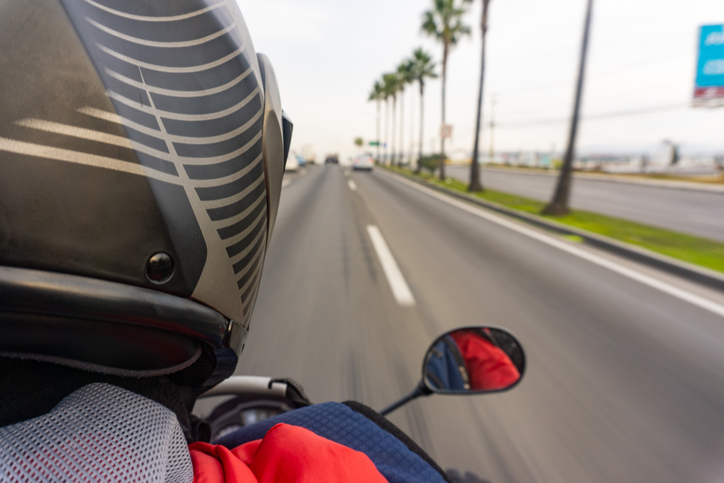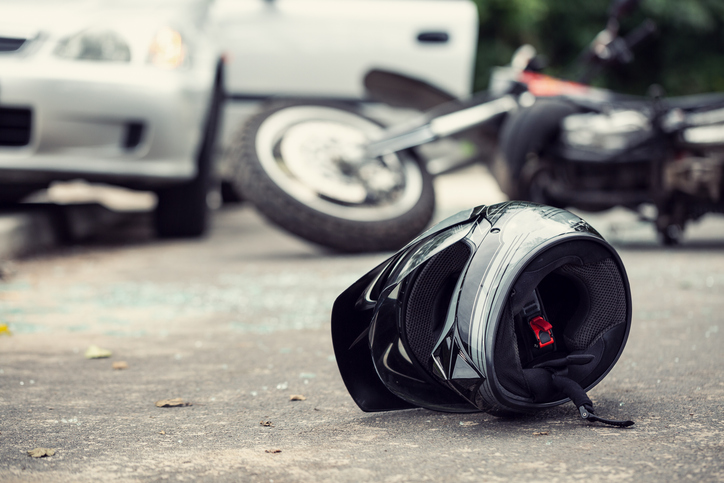
Is Lane Splitting Legal in California?
California is one of the only states to allow lane splitting. Lane splitting, also known as lane sharing, white-lining, or stripe-riding, is a practice that allows motorcyclists to navigate through slow or stopped traffic by riding between lanes. However, there are specific safety guidelines the California Highway Patrol (CHP) has developed for drivers and motorcyclists. Read on to learn about motorcyclist safety tips and when to avoid lane splitting.
What Is Considered Lane Splitting?
Lane splitting occurs when a motorcyclist rides between lanes of slow or stopped traffic moving in the same direction. It’s crucial to note that lane splitting is different from weaving in and out of lanes at high speeds, which is illegal and dangerous. Lane splitting should be conducted cautiously and with regard to the safety of both the motorcyclist and other motorists on the road.
Is Lane Splitting Dangerous?
A study conducted by the University of California Berkeley determined that when performed at moderate speeds in traffic moving at 50 mph or less, lane splitting can potentially reduce the likelihood of rear-end collisions involving motorcycles. However, it is generally advisable not to lane split above 30 mph.
While studies suggest that splitting lanes may help reduce a motorcyclist’s risk exposure on the road, lane splitting can be dangerous. Factors such as speed, traffic conditions, and the motorcyclist’s experience can influence the safety of lane splitting.
Benefits of Lane Splitting
The American Motorcyclist Association has endorsed lane splitting as a safe practice as long as it’s performed within safe highway speeds. Lane splitting supporters claim that this practice can have the following benefits:
Reduced traffic congestion: By allowing motorcycles to move between lanes, they take up less space on the road. Therefore, motorcycle riders can utilize available road space more efficiently to help alleviate traffic congestion.
Improved safety for motorcyclists: Lane splitting can decrease motorcycle riders’ exposure on the road and help them avoid hotspots for collisions. Lane splitting allows motorcyclists to maintain a steady pace in high-traffic areas, reducing the risk of motorcycles overheating with prolonged idling.
Reduced risk of rear-end collisions: By positioning themselves between lanes, motorcyclists are less likely to be caught in the blind spots of other vehicles or struck from behind in stop-and-go traffic.
What Are California’s Lane Splitting Laws?

California was the first state in the United States to officially legalize lane splitting. Lane Splitting or lane sharing was defined in California Vehicle Code Section 21658.1 in 2017. The California Highway Patrol (CHP) has issued guidelines for safe lane splitting based on various factors such as traffic speed, flow, and conditions.
Are There California Lane Splitting Speed Limits?
While California law does not specify an exact speed limit for lane splitting, the CHP guidelines advise motorcyclists to keep their speed differentials to no more than 10 mph faster than the surrounding traffic. Additionally, lane splitting is generally safer when traffic is moving at 30 mph or below. Motorcyclists should exercise caution and reduce speed accordingly in faster-moving or congested traffic conditions.
What Lanes Can You Split in California?
In California, motorcyclists are permitted to split lanes between adjacent rows of traffic moving in the same direction. This means motorcyclists may legally split lanes between cars, trucks, and other vehicles on multi-lane roads and highways. However, splitting lanes between the HOV lane and normal traffic is generally not permitted.
Can You Lane Split to the Front of a Red Light in California?
Lane splitting is often confused with lane filtering. Lane filtering occurs when motorcycle riders move to the front of stopped traffic at a red light.
In California, motorcyclists are allowed to move to the front of a red light, provided they do so safely and within the guidelines outlined by the CHP. This practice can help reduce congestion at intersections and improve traffic flow by allowing motorcycles to filter to the front of the line when traffic is stopped.
When to Avoid Lane Splitting
While lane splitting may reduce traffic and road accidents, it can be dangerous if not performed correctly under safe conditions. While lane splitting is legal in California, there are certain situations when it’s best to avoid lane splitting:
High-speed traffic: Lane splitting at high speeds, especially in traffic moving faster than 40 mph, can increase the risk of motorcycle accidents and should be avoided.
Narrow lanes: If the lanes are too narrow to safely accommodate a motorcycle, it’s best to refrain from lane splitting to prevent collisions with the surrounding vehicles.
Poor weather conditions: Reduced visibility and slippery road surfaces during inclement weather can make lane splitting more hazardous, so it’s advisable to avoid it under poor weather conditions.
Motorcycle Traffic Safety Tips
Here are some essential safety tips motorcycle riders should keep in mind:
- Stay visible: Ensure that other motorists can see you by using headlights, turn signals, and wearing brightly colored or reflective gear.
- Watch your speed: Keep your speed differential to a maximum of 10 mph faster than surrounding traffic and adjust your speed according to traffic conditions.
- Stay alert: Pay close attention to the movements of other motor vehicles and anticipate potential hazards or sudden lane changes.
- Wear protective gear: Always wear a DOT-approved helmet and other protective gear, including gloves, boots, and clothing made of abrasion-resistant materials.
Were You Injured in a Lane Splitting Accident?

If you were injured in a lane splitting accident caused by someone else’s negligence, you may be able to pursue fair compensation for your injuries and losses. Determining liability in a motorcycle accident case can be complex and may depend on factors including the motorcyclist’s speed, traffic conditions, and the actions of other motorists involved.
Factors such as negligence, reckless driving, and failure to yield right-of-way can influence liability determinations. Consulting with an experienced motorcycle accident attorney can help clarify liability issues and protect the rights of injured motorcyclists.
Consult an Experienced Motorcycle Accident Attorney in Pasadena
If you’ve been involved in a lane splitting accident in California, it’s crucial to seek legal guidance from an experienced motorcycle accident attorney who understands the complexities of California’s lane splitting laws.
At Rose Accident Lawyers, we are dedicated to helping injured motorcyclists obtain justice. Our personal injury attorneys can help you navigate the legal process, protect your rights, and pursue fair compensation for your injuries and damages. Call our Pasadena personal injury law firm for a free consultation.
